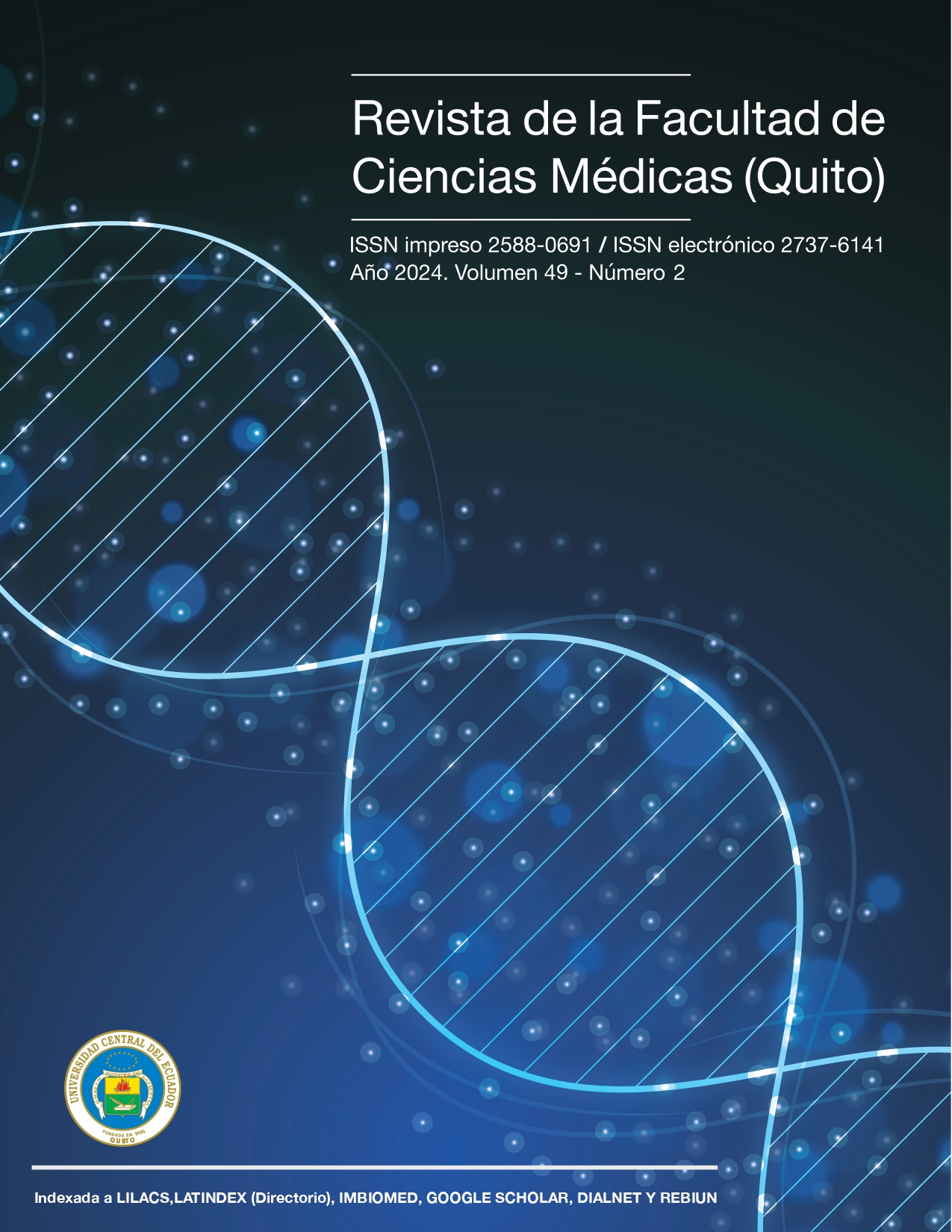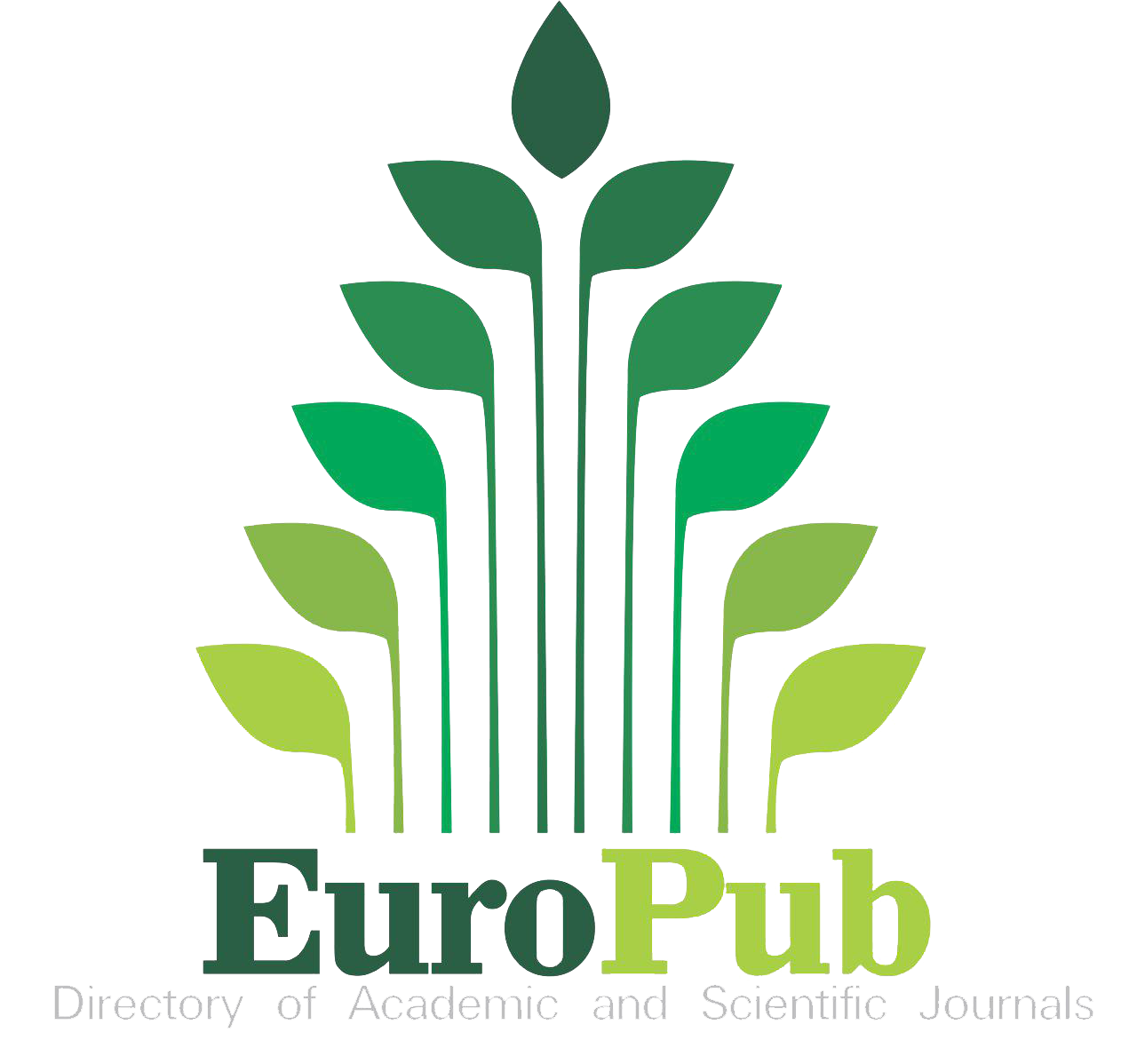Percepciones de anestesiólogos sobre prevención y tratamiento del temblor postoperatorio
DOI:
https://doi.org/10.29166/rfcmq.v49i2.6179Palabras clave:
temblor, recuperación postanestésica, hipotermia, anestesia general, anestesia regionalResumen
Introducción: El temblor o escalofrío constituye una manifestación clínica muy frecuente en el postoperatorio del paciente intervenido bajo anestesia general o anestesia raquídea, si bien la hipotermia es el principal factor de riesgo para su presentación, también se mencionan otros factores como el uso de opioides, duración de la cirugía, administración de líquidos intravenosos a temperatura ambiente, entre otros.
Objetivo: Establecer la correlación de conocimientos con las actitudes y prácticas de anestesiólogos sobre prevención y tratamiento del temblor postoperatorio.
Material y métodos: Estudio observacional analítico de correlación; muestra de 35 profesionales de los principales hospitales de Cuenca, mediante la aplicación de un cuestionario elaborado por la autora, se recopilaron los conocimientos, actitudes y prácticas, se utilizó el paquete estadístico SPSS V 25, la investigación contó con la autorización de viabilidad ética del COIF de la Facultad de Ciencias Médicas de la UCE.
Resultados: La muestra estuvo caracterizada por ser de sexo femenino (54,3%); el grupo de edad más frecuente fue 40,89 años, el 31,4% cuenta con experiencia laboral mayor de 10 años; la mayor parte de profesionales labora en el Hospital del Seguro Social, 57,1%. En su mayoría, 60%, posee conocimientos regulares, el 51,4% presentaron una calificación regular en actitudes y, con respecto a las prácticas, el 77,1% manifestó calificaciones regulares. Hubo una correlación positiva débil (37%) entre los conocimientos con las actitudes (p:0,028), pero no entre los conocimientos con las prácticas.
Conclusión: Existe una correlación positiva débil entre los conocimientos con las actitudes y prácticas relacionadas con la prevención y tratamiento del temblor postoperatorio.
Descargas
Métricas
Citas
Benavides CA, Prieto FE, Torres M, Buitrago G, Gaitán H, García C, et al. Manual de práctica clínica basado en la evidencia: Controles posquirúrgicos. Rev. Colomb Anestesiol. [Internet]. 2015[Cited Abr 28,2024];43(1):20-31. Available from: http://www.scielo.org.co/scielo.php?script=sci_arttext&pid=S012033472015000100005&lng=en. https://doi.org/10.1016/j.rcae.2014.11.001.
Cordero I. Temblores posoperatorios; una complicación frecuente. Rev. Cuba Anestesiol Reanim. [Internet]. 2014 [Cited Abr 28,2024];13(2):102-104. Available from: http://scielo.sld.cu/scielo.php?script=sci_arttext&pid=S1726-67182014000200001&lng=es.
De Nadal M, Chocrón I. Cuidados postoperatorios incluyendo tratamiento del dolor. Recomendaciones para la elaboración de un protocolo. Revista Especialidades Anestesiología y Reanimación. [Internet]. 2013 [Cited Jun 15,2023];60(S1):94-104. Available from: https://doi.org/10.1016/S0034-9356(13)70014-8.
Cao C, Lv M, Wei C, Yan J, Wang Y, Gu C. Comparison of dexmedetomidine and meperidine for the prevention of shivering following coronary artery bypass graft: study protocol of a randomised controlled trial. BMJ Open. [Internet]. 2022 [Cited Jun 15,2023];12(2):e053865. Available from: https://doi.org/10.1136/bmjopen-2021-053865
Gallegos C, Jarrín J, Marcela F, et al. Hipotermia asociada a temblor en pacientes post- quirúrgicos en el área de recuperación del Hospital Pablo Arturo Suarez. Octubre a diciembre 2018. Quito, 2019. [Internet]. 2019 [Cited Jun 15,2023]. Available from: http://bibliotecavirtualoducal.uc.cl/vufind/Record/oai:localhost:123456789-1615564
Rodríguez S. Frecuencia de temblor posanestésico relacionado con hipotermia en pacientes sometidos a bloqueos neuroaxiales en el Hospital General de Puebla “Dr. Eduardo Vázquez Navarro”. México, 2019. [Internet]. 2019 [Cited Jun 15,2023]. Available from: https://repositorioinstitucional.buap.mx/server/api/core/bitstreams/630fa5c7-5813-4685-90b1-2e5e5abde4f0/content
Sun J, Zheng Z, Li YL, Zou LW, Li GH, Wang XG, et al. Nalbuphine versus dexmedetomidine for treatment of combined spinal-epidural post-anesthetic shivering in pregnant women undergoing cesarean section. J Int Med Res. [Internet]. 2019[Cited Jun15,2023].;47(9):4442-53. Available from: DOI: https://doi.org/10.1177/0300060519865063. Epub 2019 Jul 29. PMID: 31353989; PMCID: PMC6753531.
Rivera A, Costales B. Prevención de la hipotermia perioperatoria: una estrategia de enfermería. 2022. Tesis de Licenciatura. Universidad Técnica de Ambato/Facultad de Ciencias de la Salud/Carrera de Enfermería. [Internet]. 2022 [Cited Oct 4,2023];29(1). Available from: https://repositorio.uta.edu.ec/jspui/handle/123456789/36779
Lewis SR, Nicholson A, Smith AF, Alderson P. Alpha-2 adrenergic agonists for the prevention of shivering following general anaesthesia. Cochrane Database Syst Rev. [Internet] .2015 [Cited Oct 4,2023];2015(8). Available from: https://doi.org/10.1002/14651858.CD011107.pub2
Yu G, Jin S, Chen J, Yao W, Song X. The effects of novel α2-adrenoreceptor agonist dexmedetomidine on shivering in patients underwent caesarean section. Biosci Rep. [Internet]. 2019 [Cited Jun 15,2023];39(2): BSR20181847. Available from: https://doi.org/10.1042/BSR20181847. PMID: 30643009; PMCID: PMC6356034.
Abdel-Ghaffar HS, Mohamed SA, Fares KM, Osman MA. Safety and Efficacy of Dexmedetomidine in Treating Post Spinal Anesthesia Shivering: Arandomized Clinically Controlled Dose-FindingTrial. Pain Physician. [Internet]. 2016 [Cited Jun 15,2023];4;19(4;5):243-53. Available from: PMID: 27228512.
Hameed M, Akber N, Ahsan K, Nazir M. Pharmacological Interventions for the Treatment and Control of Shivering in Adult Patients Undergoing Elective Surgery Under Regional Anaesthesia: A Systematic Review and Meta-Analysis. Turk J Anaesthesiol Reanim. [Internet]. 2022[Cited Jun 15,2023];50(4):246-254. Available from: DOI: 10.5152/TJAR.2021.20008
Fern L, Misiran K. Comparison of dexmedetomidine, pethidine and tramadol in the treatment of post-neuraxial anaesthesia shivering. South Afr J Anaesth Analg. [Internet]. 2015 [Cited Jun 15,2023];21(1):14-8. Available from: https://doi.org/10.1080/22201181.2015.1013323
Wang J, Wang Z, Liu J, Wang N. Intravenous dexmedetomidine versus tramadol for treatment of shivering after spinal anesthesia: a meta-analysis of randomized controlled trials. BMC Anesthesiol. [Internet]. 2020[Cited Jun 15,2023];20(1):104. Available from: https://doi.org/10.1186/s12871-020-01020-y. PMID: 32366218; PMCID: PMC7199340.
Ramos G, Grünberg G. Evaluación de la incidencia de temblores en la sala de recuperación postanestésica. Anest Analg Reanim. [Internet]. 2016[Cited Jun 15,2023];29(1). Available from: http://www.scielo.edu.uy/scielo.php?script=sci_arttext&pid=S1688-12732016000100002&lng=es&tlng=es.
Alhamdan E, Nourah A, et al. Poor level of public knowledge toward essential tremor in Saudi Arabia: a cross-sectional study. International Journal of Medicine in Developing Countries 2021. JMDC. [Internet]. 2021 [Cited Jun 15,2023]; 5(12): 2083-2090. Available from: https://doi.org/10.24911/IJMDC.51-1633453521
Espitia L, Medina M. Escala de valoración de riesgo de hipotermia intraoperatoria.2018. Tesis. [Internet]. 2018 [Cited Jun 15,2023]. Available from:https://repositorio.upch.edu.pe/bitstream/handle/20.500.12866/13507/Cuidados_CampomanesBaldeon_Melissa.pdf?sequence=1&isAllowed=y
Descargas
Publicado
Cómo citar
Número
Sección
Licencia
Derechos de autor 2024 ANGELICA BERMEJO ALVAREZ

Esta obra está bajo una licencia internacional Creative Commons Atribución-NoComercial-SinDerivadas 4.0.











